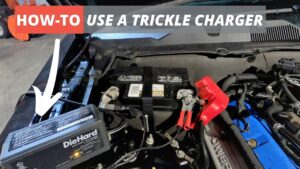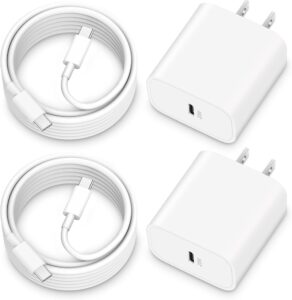Looking to dispose of a car battery responsibly? You’re in the right place! Disposing of a car battery might seem like a daunting task, but with a little guidance, it can be done safely and efficiently. In this article, we’ll walk you through the steps of how to properly dispose of a car battery, ensuring that you not only protect the environment but also comply with regulations. So, if you’ve been wondering, “How do I dispose of a car battery?” stay tuned, because we’re about to provide you with all the answers you need. Let’s get started!
How Do I Dispose of a Car Battery?
Introduction
Car batteries are an essential component of our vehicles, providing the necessary power to start the engine and run various electrical systems. However, car batteries contain hazardous materials that can harm the environment if not disposed of properly. In this comprehensive guide, we will explore the various methods and best practices for disposing of a car battery safely and responsibly.
Why is Proper Car Battery Disposal Important?
Proper car battery disposal is crucial for several reasons. Firstly, car batteries contain toxic chemicals such as lead, sulfuric acid, and various heavy metals. When not disposed of correctly, these substances can seep into the soil and water, posing a significant risk to humans, wildlife, and the environment. Secondly, improper disposal of car batteries can lead to the unnecessary waste of valuable resources, as many battery components can be recycled and reused.
1. Check Local Regulations and Laws
Before disposing of a car battery, it is important to familiarize yourself with the local regulations and laws regarding battery disposal in your area. Different regions may have specific guidelines and restrictions in place for the proper handling, transportation, and recycling of car batteries. You can start by contacting your local environmental agency or waste management authority for information on specific requirements.
1.1 Research Relevant Laws and Regulations
Start by researching the laws and regulations that pertain to car battery disposal in your area. Look for information on how to safely transport batteries, what documentation may be required, and any specific recycling or disposal facilities that must be used. Understanding your obligations will help ensure that you dispose of your car battery responsibly and avoid any potential fines or penalties.
1.2 Contact Your Local Environmental Agency
Reach out to your local environmental agency or waste management authority to gather detailed information about the specific regulations and guidelines in your area. These organizations often have resources available, such as brochures or websites, that provide clear instructions on how to properly dispose of car batteries. They may also be able to answer any questions you have and provide recommendations on local recycling centers or collection events.
1.3 Follow Governmental Recommendations
Many governments and environmental agencies provide comprehensive recommendations and guidelines regarding car battery disposal. These guidelines may include steps such as removing the battery from the vehicle, ensuring it is properly stored, and transporting it to a designated facility. By following these recommendations, you can ensure that you are disposing of your car battery in a manner that is both legal and environmentally responsible.
2. Remove the Battery from Your Vehicle
Once you have familiarized yourself with the local regulations and requirements, it’s time to remove the battery from your vehicle. It’s important to handle the battery with care and take the necessary safety precautions to avoid accidents or injuries.
2.1 Gather Necessary Tools and Safety Gear
Before removing the battery, gather the necessary tools and safety gear. You’ll typically need a pair of gloves, safety goggles, and a wrench or socket set to disconnect the battery cables. Safety gear will protect you from any potential contact with corrosive substances or electrical shocks during the removal process.
2.2 Turn Off the Engine and Disconnect Cables
Start by turning off the engine and ensuring that all electrical systems are switched off. Disconnect the battery cables by loosening the nuts or bolts that secure them to the battery terminals. It’s important to remove the negative cable (usually black) first, followed by the positive cable (usually red).
2.3 Remove the Battery from the Vehicle
Once the cables are disconnected, carefully lift the battery out of the vehicle. Batteries can be heavy, so use proper lifting techniques or ask for assistance if needed. Avoid tilting or tipping the battery to prevent any acid or electrolyte from leaking out.
3. Store the Battery Safely
Proper storage is essential when handling car batteries, even if they are no longer functional. Storing batteries incorrectly can lead to leaks, corrosion, or other hazards. Follow these steps to ensure the safe storage of your car battery until you are ready to dispose of it.
3.1 Choose a Suitable Storage Location
Select a cool, dry, and well-ventilated area for storing your car battery. Avoid areas that experience extreme temperatures or direct sunlight, as these conditions can accelerate battery deterioration. If possible, store the battery in a dedicated battery storage container or on a non-conductive surface to prevent accidental electric currents.
3.2 Keep the Battery Upright
Store the battery in an upright position to prevent any potential leaks or spills. Keeping the battery upright helps minimize the risk of acid or electrolyte escaping from the battery casing. Additionally, storing the battery upright ensures that the terminals are not in contact with any conductive materials, which could result in accidental discharge.
3.3 Protect the Terminals
To prevent accidental short circuits or discharge, protect the battery terminals with insulated terminal covers or by wrapping them with electrical tape. This will ensure that the positive and negative terminals do not come into contact with each other or other conductive objects while in storage.
4. Choose the Right Disposal Method
When it comes to disposing of a car battery, several methods are available, each with its benefits and considerations. It is important to choose the appropriate disposal method based on the condition and type of battery, as well as local regulations.
4.1 Recycle the Battery
Recycling is the preferred method for disposing of car batteries since it allows for the recovery and reuse of valuable materials. Car batteries contain lead, plastic, and other components that can be recycled and turned into new batteries or other products. Recycling centers specializing in hazardous waste or automotive materials often accept car batteries free of charge.
4.2 Return the Battery to a Retailer
Many retailers that sell car batteries have programs in place to accept used batteries for recycling. These programs are often free of charge and convenient, allowing you to drop off the old battery when purchasing a new one. Check with local retailers, such as auto parts stores or service centers, to see if they have a battery recycling program available.
4.3 Donate the Battery
In some cases, if the car battery is still in good condition, you may be able to donate it to someone in need. Organizations or individuals that can utilize used car batteries for alternative energy systems, like solar power installations or off-grid setups, may accept donated batteries. Ensure that the recipient has the necessary knowledge and infrastructure to handle and recycle the battery properly.
4.4 Contact a Hazardous Waste Collection Facility
If recycling or returning the battery to a retailer is not possible, contacting a hazardous waste collection facility or your local environmental agency is another option. These organizations can provide information on proper disposal methods and may have collection events or drop-off locations for hazardous materials, including car batteries.
Properly disposing of a car battery is essential to protect the environment and ensure the responsible use of valuable resources. By following the local regulations, removing the battery safely, storing it correctly, and choosing the appropriate disposal method, you are taking an important step towards a cleaner and more sustainable future. Remember, each step you take contributes to the preservation of our environment and the well-being of future generations.
Frequently Asked Questions
How can I properly dispose of a car battery?
When it comes to disposing of a car battery, it’s important to follow proper procedures to protect both the environment and your safety. Here are some steps you can take:
Can I throw a car battery in the regular trash?
No, you should never throw a car battery in the regular trash. Car batteries contain hazardous materials that can harm the environment if not disposed of properly.
Where can I recycle a car battery?
Many automotive stores, battery retailers, and recycling centers accept car batteries for recycling. You can also check with your local government or waste management facilities for designated drop-off locations.
Do I need to prepare the car battery before recycling it?
Yes, before recycling a car battery, it’s important to take some precautions. First, make sure to wear gloves and safety goggles to protect yourself from any acid spills. It’s also recommended to place the old battery in a sturdy plastic bag or container to prevent leakage during transportation.
Are there any hazardous materials in a car battery?
Yes, car batteries contain hazardous materials such as lead, acid, and various chemical compounds. These materials can cause harm to the environment if not disposed of properly. Recycling facilities have the necessary processes to handle these materials safely.
Is there a fee for recycling a car battery?
While some recycling centers may charge a small fee for accepting car batteries, many automotive stores offer free recycling as a service to their customers. It’s always a good idea to check with the specific location beforehand to inquire about any fees involved.
Final Thoughts
In conclusion, disposing of a car battery requires special care and consideration. It is crucial to follow the proper procedures to protect the environment and ensure safety. To dispose of a car battery, start by checking local regulations and contacting recycling centers or auto shops that accept them. Never throw a car battery in the trash or pour its contents down the drain. By properly disposing of car batteries, we can minimize harmful impacts and contribute to a cleaner and greener future. So, if you are wondering how do I dispose of a car battery, remember to take the necessary steps to handle it responsibly.



